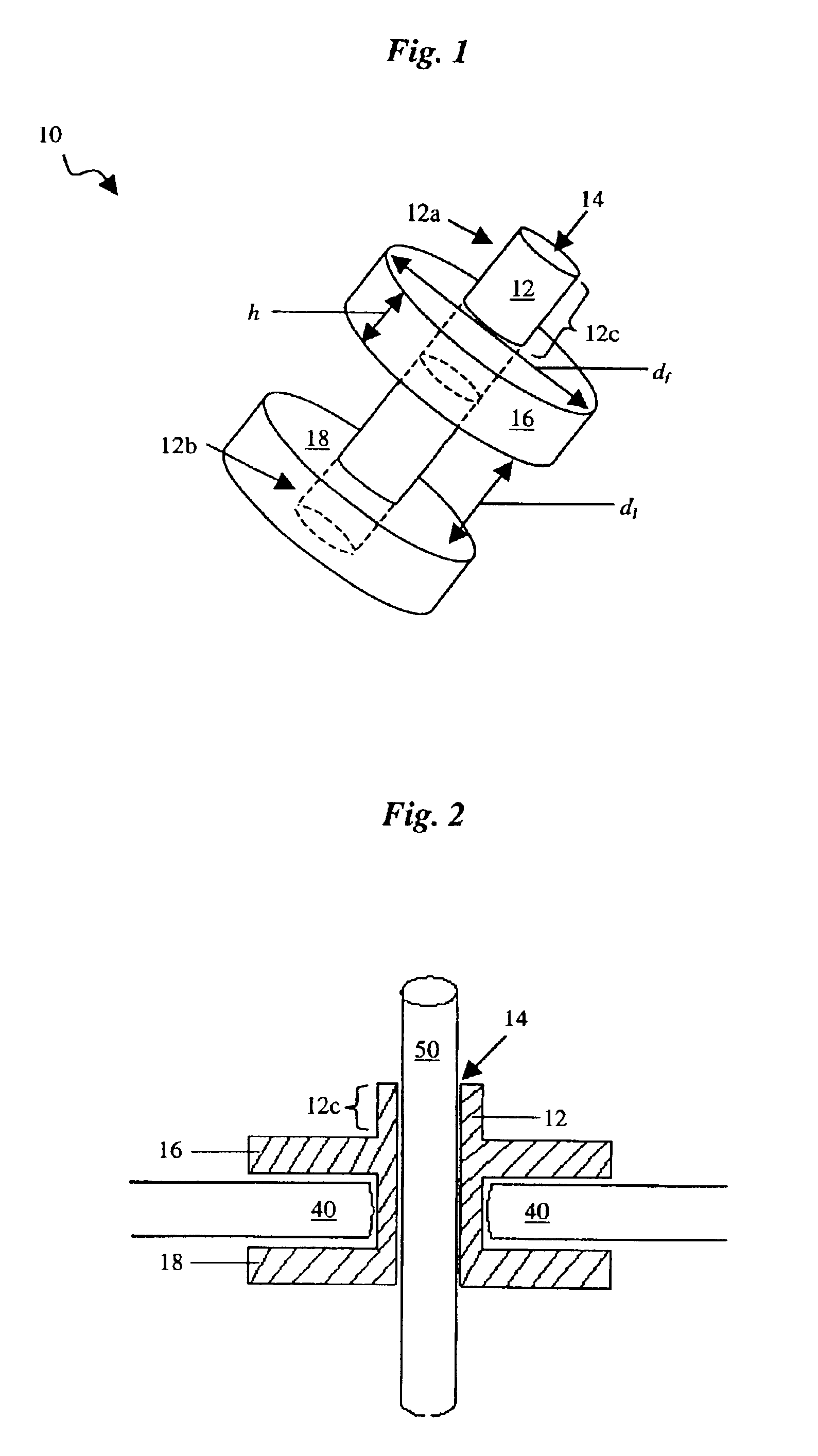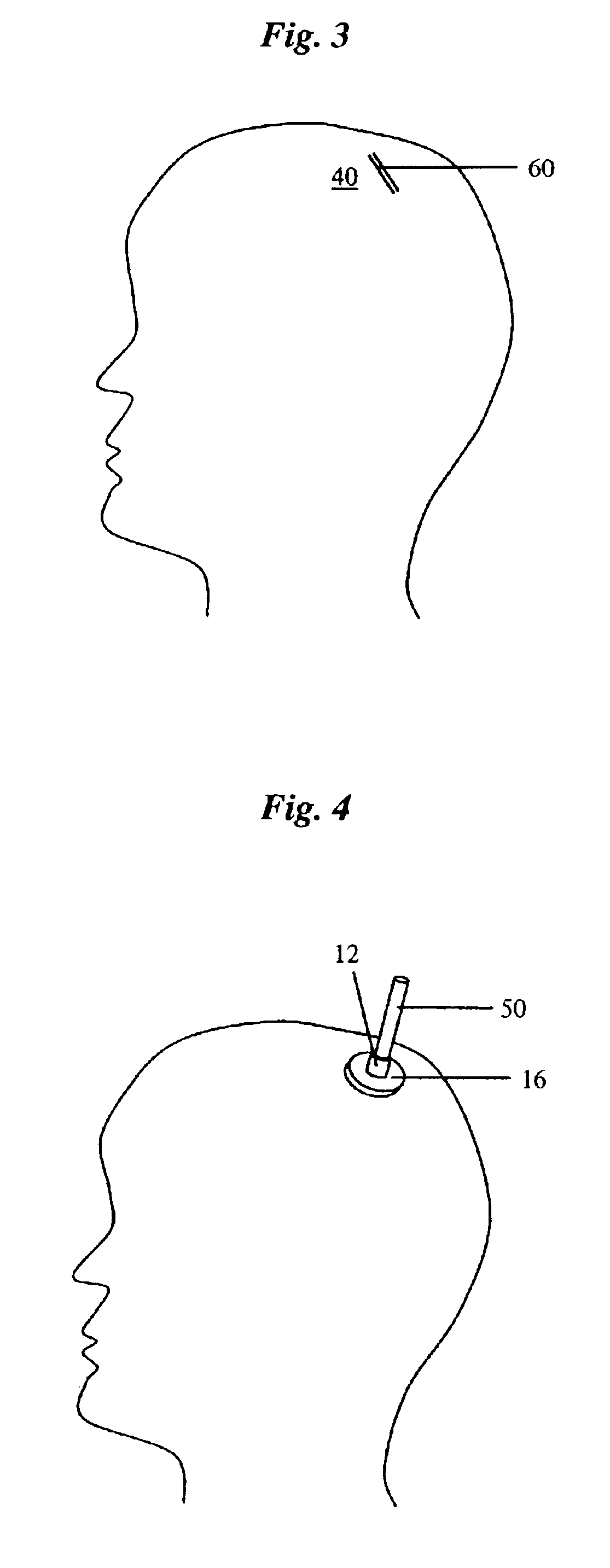Percutaneous access device
a percutaneous access and catheter technology, applied in the direction of catheters, other medical devices, needles infusion, etc., can solve the problems of infection risk at the site of catheter insertion, interference with the perfusion of the nervous system,
- Summary
- Abstract
- Description
- Claims
- Application Information
AI Technical Summary
Problems solved by technology
Method used
Image
Examples
Embodiment Construction
[0012]As shown in FIGS. 1 and 2, the present invention generally provides a percutaneous access device 10 that is effective for use in inserting a percutaneous device, such as a catheter 50, into a patient. While the device is described and illustrated for use with a ventricular catheter, a person skilled in the art will appreciate that the device can be used for a variety of procedures and with a variety of percutaneous devices, including, for example, urethral, venous, and arterial catheters, orthopaedic trauma pins, intracranial press sensors, and other percutaneous device, including both short-term and long-term devices. In general, the device 10 includes a sleeve 12 having an inner lumen 14 extending therethrough for receiving a catheter 50, and at least one tissue-protecting member disposed around the sleeve 12. As shown in FIGS. 1 and 2, the device 10 includes first and second tissue-protecting members that are in the form of first and second flanges 16, 18 positioned around ...
PUM
| Property | Measurement | Unit |
|---|---|---|
| inner diameter | aaaaa | aaaaa |
| distance | aaaaa | aaaaa |
| cylindrical shape | aaaaa | aaaaa |
Abstract
Description
Claims
Application Information
 Login to View More
Login to View More - R&D
- Intellectual Property
- Life Sciences
- Materials
- Tech Scout
- Unparalleled Data Quality
- Higher Quality Content
- 60% Fewer Hallucinations
Browse by: Latest US Patents, China's latest patents, Technical Efficacy Thesaurus, Application Domain, Technology Topic, Popular Technical Reports.
© 2025 PatSnap. All rights reserved.Legal|Privacy policy|Modern Slavery Act Transparency Statement|Sitemap|About US| Contact US: help@patsnap.com



